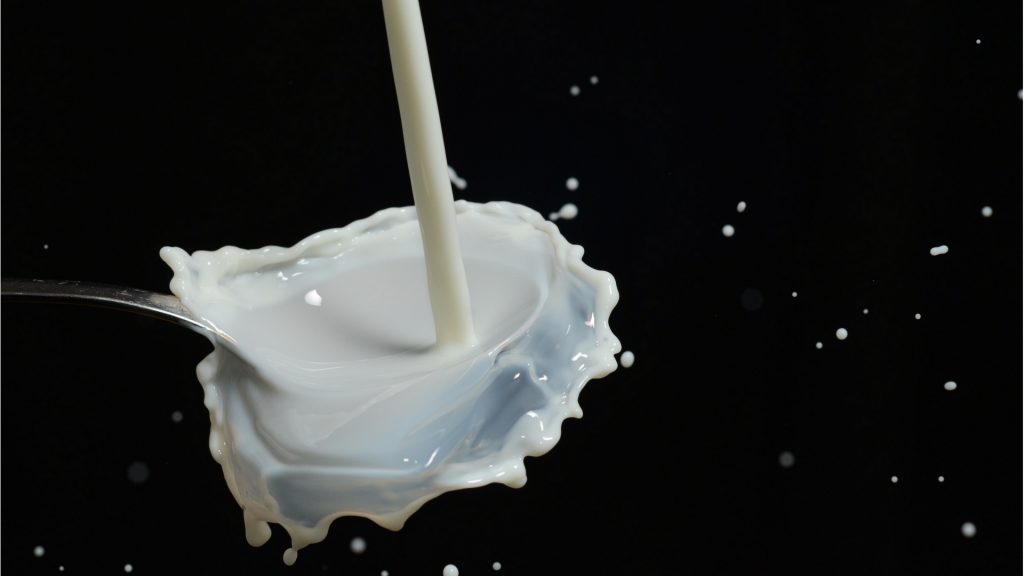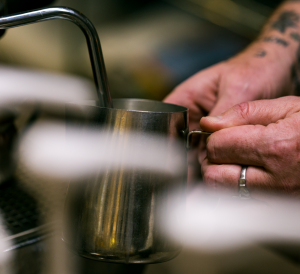
Foamed milk was first introduced to Italian coffee in the early 20th Century, and since then, its has shown little sign of disappearing. Aside from adding a texture to the much-beloved beverage it accompanies, foamed milk can provide an otherwise absent flavor when steamed correctly. It’s clear that the steamed foam fascination is more than a simple fad, but the future of new cold foam beverages is a little more unclear. With the introduction of this new product (and the new method of creation that it necessitates), we thought it prudent to look at the process that makes foam so magical in a mug.
Let’s begin with the science behind steamed milk. Milk is primarily a composition of three main ingredients: fat, carbohydrates, and proteins. When cold milk is exposed to heat (in this case, the heat introduced via an espresso machine’s steam wand), the proteins that are typically bundled together begin to unfold, allowing them to more strongly hold together. Heat also breaks down the carbohydrates within the milk into simpler, sweeter tasting sugars, and it melts the milk’s fat for an even creamier texture, which is why whole milk tends to be the coffee aficionado’s go-to foaming agent. The introduction of air throughout this process creates small bubbles that in turn form the foam we adore.
 An important factor in this “denaturing” process is to begin with cold milk and to then heat it while also introducing air. This ensures that the milk has little time to denature naturally and is instead heated rapidly for smaller bubbles, thus creating a smooth and tasty microfoam.
An important factor in this “denaturing” process is to begin with cold milk and to then heat it while also introducing air. This ensures that the milk has little time to denature naturally and is instead heated rapidly for smaller bubbles, thus creating a smooth and tasty microfoam.
Microfoam is that creamy goodness that sits at the top of your latte, your cappuccino, or your grande half-caff 185-degree soy half-syrup added caramel drizzle vanilla latte! You know the stuff. It’s warm, sweet, and it makes our favorite coffees complete. But is it possible to achieve true microfoam with the cold foam process?
We’ll want to begin by considering how the cold foam production process differs from that of steamed milk. If you’ve ever blended your own whipped cream, then you’re likely already familiar with the process that cold foam requires. By whipping nonfat milk at a rapid speed, the milk becomes aerated and fluffy. Of course, by removing the element of heat, this new foam introduces new possibilities for iced coffees. Instead of drinking plain old coffee over ice, you can add a touch of decadence to your beverage in the form of a foamy new texture.
However, with the absence of heat in its foaming process, this cold foam does miss out on the denaturing enjoyed by its warmer counterpart. This means that you’re unlikely to find cold foam to be quite as creamy and dense as you’re used to. By choosing a nonfat milk for cold foam, whipping is easier, since the lighter substance is more prone to bubbling, but the result is a much dryer foam due to the absence of warmed, melted fat. Additionally, any sweetness experienced in the foam needs to be introduced separately, likely in the form of a sweetener product.
So, is cold foam here to stay or is it a mere fad? Ultimately, that’s something the market will decide. It can’t be denied that cold foam adds something new to the everyday cold-brew but, if it adds little more than texture to the overall experience, it could quickly lose popularity as a result. One thing we can say is that it certainly looks inviting and is a welcome innovation, even if it does only last for the summer.



